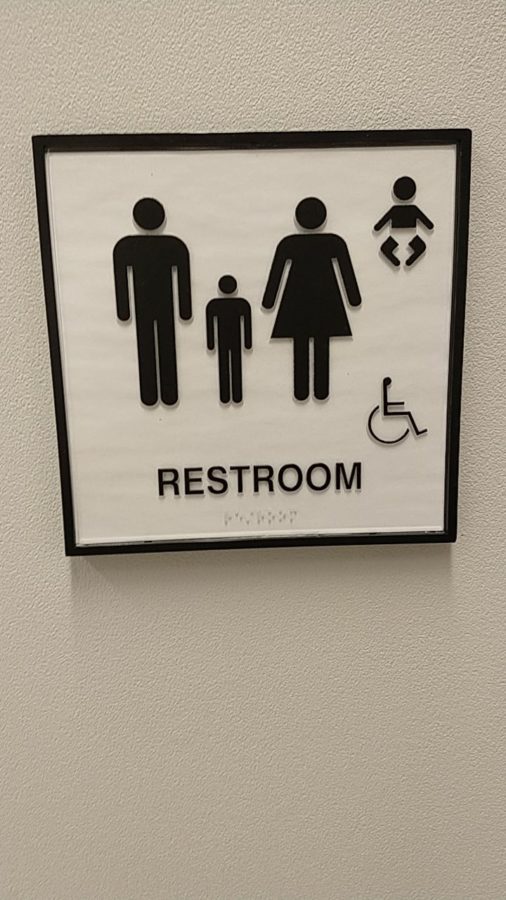Fox: Restroom signs need to be changed
Columnist Parker Fox argues that restroom signs need to be changed not only on campus, but in all public places. Fox believes that the signs should just depict a toilet in order to avoid using non-inclusive gender symbols.
October 9, 2019
This Coming Out Day article is brought to you by columnist Parker Fox, formally known as Shannon Fox.
Across the country, more and more people are feeling comfortable enough to identify differently than they were assigned at birth, and many others transcend the western concept of the gender binary altogether. Among the many challenges facing this community, there is one issue that upon first glance may seem minor: restroom signs.
Why is there an issue with restroom signs? The issue actually lies in the safety and comfort of the transgender and non-binary community. Many states have attempted to pass what are known as “bathroom bills,” which “restrict access to multiuser restrooms, locker rooms and other sex-segregated facilities on the basis of a definition of sex or gender consistent with sex assigned at birth or “biological sex” (nscl.org). Biological sex, in the eyes of legislators, refers to what is more appropriately known as sex (and/or gender) assigned at birth — the sex the doctor deems a child once it is born.
One of the main arguments for this type of bill, which is sexist in and of itself, is that men will “pretend” to be women in order to harass women in the restroom. Research shows that there is no correlation between allowing transgender access to restrooms and bathroom-related crimes. It is inherently sexist because it assumes men are more likely to commit this sort of crime by omitting that the opposite (if statistics supported these claims, which they don’t) of women sneaking into men’s bathrooms is equally possible. Not only that, but it ignores the existence and identity of trans men and non-binary individuals.
Unfortunately, because people are willing to propose such bills, people exist who are willing to harass trans people for using the bathroom in accordance with their identity. Statistics show that 46 percent of trans people are verbally harassed each year simply for being transgender. With society’s all-too-slow acceptance of trans and non-binary individuals, many may fear to use the “men’s” or “women’s” restroom.
In order to help its LGBTQIA+ students, Iowa State is starting to provide gender inclusive, single-user restrooms. Certainly, this is a good middle-ground for the current polarization in the community. This is where bathroom signs come into play. The gender-neutral bathroom sign located on the main floor of the Parks Library is a good example of an awkward attempt at inclusivity. It depicts the men’s restroom symbol, the women’s restroom symbol, a small men’s symbol (perhaps depicting a child), a baby and a handicapped symbol. While it is important to know if the stall is handicap accessible and if there is a baby changing table, having a man symbol and a woman symbol doesn’t really address the wider community with non-binary identities. It presumes that the room is for men and women, but what about everyone else?
It is for this reason that I propose a different symbol for a restroom stall: a picture of a toilet. A sign that just says — you guessed it — toilet. Of course, handicap and baby changing signs are still necessary. However, it avoids the “man or woman” paradigm, the symbols for which are dated anyway; women have worn clothing other than dresses for quite some time now. While I appreciate the progress that Iowa State and many other institutions have made to be gender-inclusive, it’s time to take the next step and make the toilet room sign a toilet.

















